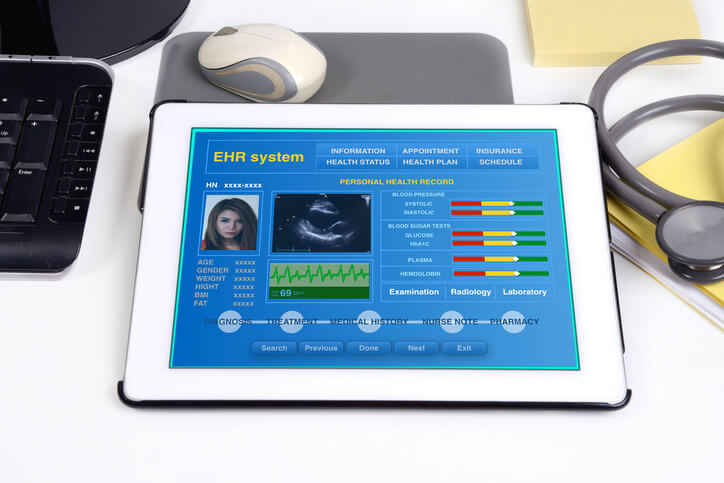EHR – what’s the state of the art and actual discussion?
Electronic Health Record is patient’s chart sheet (consolidated health records containing information about medical history, diagnosis, immunization schedule, allergy indications, treatment plans, laboratory test results, X-Ray images and MRIs scans) in digital form. Additionally, it also allows access to evidence-based tools that doctors and providers can use to make decisions about a patient’s treatment. It also reduces manual record keeping and automates provider workflow.
The information can be used to share with other health service providers for better and quicker treatment. Also, the data files (of course with permission of the patient involved) can be shared with laboratories, medical imaging facilities, research institutes, emergency facilities, school, etc. for smooth functioning and minor hassle. Over the past ten years, EHR/EMR (Electronic Medical Record) has been adopted at an extraordinary pace throughout various parts of the world.
Electronic Health Record(EHR) trend for past ten years
According to the scientific paper by Chun-Ju Hsiao and Esther Hing, 2012 has seen about 71.8% physicians in the US compared to 34.8% office-based physicians integrating EHR in their systems. Furthermore, 27% of them have the primary system integrated already.[1] Following are top trends followed in 2016:-
- EHRs are shifting their base to cloud: which makes sharing between different institutions faster and easier (as well as easy to maintain too) On-premise are expensive to set up (it takes about $40,000), which is waived away if you have the cloud-based infrastructure. It can also be easily updated compared to the previous system.
- Patient portals: Now more and more hospitals are adopting patient portals. It first started off in 2013, and then increased rapidly by about 26% by 2014.
- The advent of telemedicine: Very useful to reduce the cost of care, with remote access to patients, and provides flexibility to providers.
- EHR shall go mobile: EHR shall finally go mobile, which shall also boost forward adoption of telemedicine. A majority of users (patients and doctors alike) are quite satisfied with health apps.
- EHR and Big Data: With the introduction of EHR, it certainly leads to simultaneous access to large datasets necessary for experiments and evidence-based medicine.
- EHR security: web-based security is still a big concern for HER on Cloud. Cloud-based HER system achieves HIPAA compliance with high-level encryption methods and final level security.
| Recommended for you | |
| 4 dangers of health-related information falling into wrong hands | |
| Telemedicine | |
| Top digital health events in India |
How mobiles affect the change of use of EHR?
Mobile EHR has the potential to change the patient-doctor experience forever in future. It revolutionizes the health sector in the following ways:
- More patient-oriented treatment as the patient gets more involved.
- Accuracy increases.
- Allows better communication between patients and doctor. No more grey zone between providers and payers. It increases transparency and leaves room for verification.
- Preventive care guidelines and cures become shareable, which again increases awareness.
- Significantly improves telemedicine, which in turn reduces the cost of medicines and care.
The movement towards nationalized database and big data
With EHR data stored in cloud and research laboratories getting access to the database, it can kick-start several medical experiments requiring an enormous amount of information. For example, to identify the gene responsible for cancer patients, one needs to go through several sample points and determine the similarities. DNA structure’s complexity just for a person was already a huge deal in 1999, but the supercomputers and cloud technology has allowed scientists to allow for parallel computation and breaking up the entire data into chewable chunks.
A nationalized database along with public access is essential to allow for large-data based experiments.
Undoubtedly, recent trends in EHR have already pushed forward the diagnosis and analysis by several bounds. Also, digitalized health records are easy to manage and maintain.
Companies associated with EHR
There are several companies currently involved with recent trends in EHR:-

















